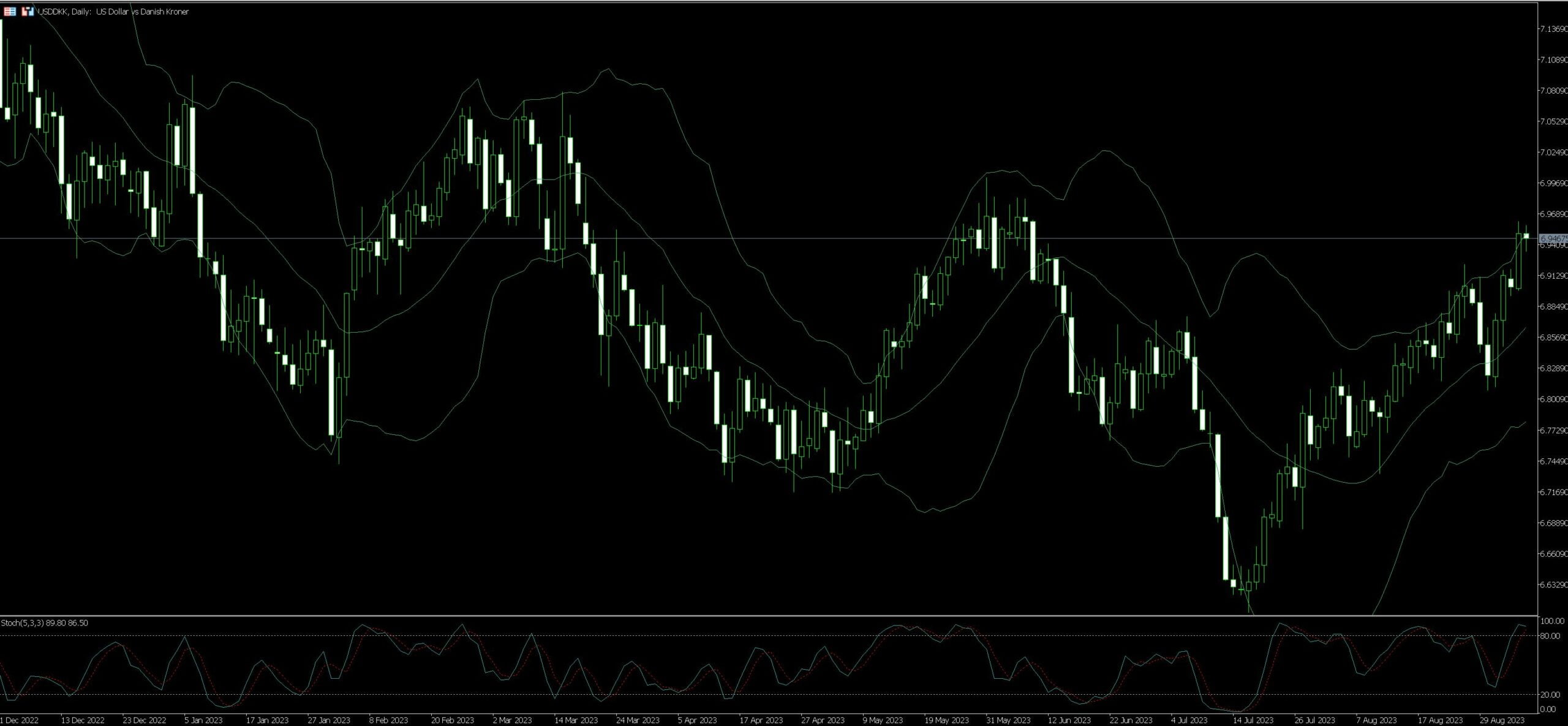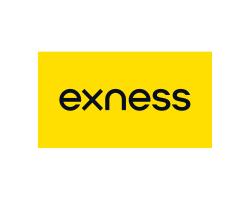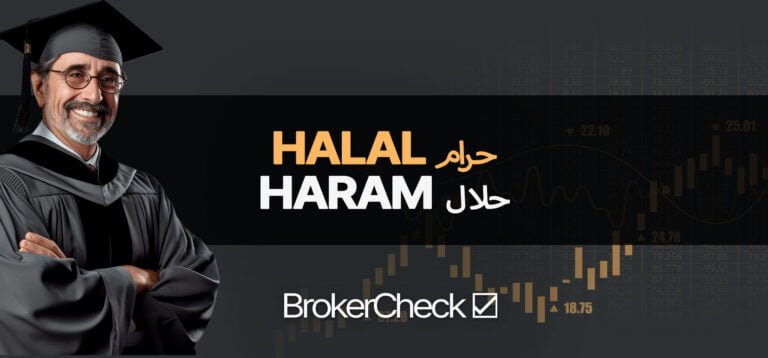Live Chart Of USD/DKK
1. Understanding USD/DKK Currency Pair
The USD/DKK currency pair, connecting the United States Dollar and the Danish Krone, is one of key importance when it comes to the foreign exchange market. Taking the time to understand this pair can open an avenue of trading that many don’t initially consider. A currency pair like this represents a measure of how much of the second (quote) currency is required to buy one unit of the first (base) currency. In the case of the USD/DKK, traders will be watching to see how many Danish Kroner are needed to purchase one U.S. Dollar. The USD is often referred to as the ‘base’ while the DKK is the ‘quote’, and any changes in economic figures in either of these nations can significantly impact the value of this currency pair.
Both the United States and Denmark have stable economies, which contributes to the USD/DKK’s stability. However, even this stability is subject to occasional turbulence. Economic indicators such as interest rates, GDP growth, political events, and employment figures can cause shifts in the value of these currencies and, consequently, impact the exchange rate. Traders are advised to keep a close watch on these economic events and indicators in both countries to make well-informed decisions.
Also, it should be noted that Denmark maintains a fixed exchange rate policy with the Euro. This means that the Danish Central Bank, Danmarks Nationalbank, intervenes if the Krone fluctuates more than 2.25% from a central rate of 7.46038 Kroner to the Euro. This policy can influence the USD/DKK pair, making it crucial for traders to keep an eye on Eurozone events and economic indicators as well.
Daily trading volume and the timing are other critical factors to consider while trading the USD/DKK. The pair is not as heavily traded as major pairs like EUR/USD or USD/JPY, hence, liquidity can be an issue at certain times of the day. Additionally, as the trading spans multiple time zones, it’s not unusual to see the markets react to news and data releases at different times. Therefore, understanding global economic events, keeping an eye on market trends, and adapting trading strategies are essential to successfully trade this unique pair.
Leveraging technical analysis tools such as trend lines, support and resistance levels, and Fibonacci retracements can help traders to recognize potential trading opportunities with the USD/DKK. These tools enable traders to spot trends and reversals, set stop-loss and take-profit levels, and better manage trading risks. Further, utilizing trading strategies such as swing trading, breakout trading or position trading can provide a structured approach to USD/DKK trading.

1.1. Definition of USD/DKK
USD/DKK is a currency pair that denotes how many Danish kroner (DKK) you can exchange for one United States dollar (USD). This particular pairing is considered an exotic forex market pair. The Danish kroner is the national currency of Denmark, while the United States dollar is the standard currency of the United States. The financial balance between the two currencies is what drives the trading value for the USD/DKK and typically oscillates based on political, social, and economic factors in each country. Many forex traders are eager to trade the USD/DKK due to its potential for significant price swings and plentiful trading opportunities. Although it can pose higher risks compared to major currency pairs, the potential for high returns makes it an enticing choice for experienced traders. Knowledge of market behaviour, diligent risk management strategies and comprehending key economic indicators are all vital elements in navigating the USD/DKK trading scene. It offers a unique blend of opportunities and challenges that can suit a broad spectrum of trading styles and investment strategies.
1.2. Importance of USD/DKK in Forex Trading
USD/DKK, or the pair that represents the United States Dollar and the Danish Krone, holds a significant place in Forex trading. Owing to the robust economies of both these nations, a large number of traders find it a highly promising currency pair. The diversity it offers is unmatched; an exciting combination of a dominant global currency with a less prevalent, yet stable counterpart.
The US Dollar, being the world’s leading currency, illustrates a strong influence in the Forex market. Its strength, health and prospects often set the tone for many trading decisions. Hence, the intrinsic value of the USD often shapes the dynamics of the USD/DKK pair.
On the other side of this tandem, the Danish Krone also poses its unique attributes. Denmark, a member of the European Union but not of the Eurozone, maintains the Krone as its currency. This sovereign control over its own monetary policies brings about an exclusive appeal for the DKK.
USD/DKK Forex trading can be particularly beneficial for those who understand how to leverage these attributes. Notably, factors such as interest rate decisions, economic data releases, and geopolitical events often play a pivotal role in determining the volatility and subsequent profitability of this pair. With a well-planned strategy, traders can capitalize on these fluctuations, making USD/DKK trading both a challenging and profitable endeavour.
Understanding the intricacies of USD/DKK can open up new avenues for traders. From creating diversified investment options to providing a platform for high-volume trading, the USD/DKK Forex trading proves its vitality in the trading world. Seasoned traders, as well as those starting on their trading journey, can tap into the potential of this pair, achieving their financial goals while gaining a deeper understanding of the global economy.
2. Effective Strategies for Trading USD/DKK

The USD/DKK (United States Dollar / Danish Krone) pair may not be the most well-known in the Forex market, but it still holds numerous trading possibilities. The key to successful trading with USD/DKK is developing an understanding of the factors influencing both economies, and implementing effective strategies relevant to this particular pair.
Employing a basic technical analysis is an essential step in developing a proper trading strategy for USD/DKK. This involves observing past patterns in charts and graphs, aiming to predict future market movements. In addition, understanding the consumption and production statistics may be a beneficial addition to finding possible trends. It is crucial to look for significant political and economic events that could impact either the USD or DKK, resulting in fluctuating market conditions.
A contrasting, but equally significant method is using a fundamental analysis. Focus on the economic indicators including GDP growth, unemployment rates, and political stability. It is also insightful to pay attention to world events that may affect either countries’ economic health and reaction of their central banks.
Another commonly used trading strategy is intraday trading, which involves making multiple trades within a day. For this, understanding intraday volatility patterns for USD/DKK could prove beneficial. Monitoring financial news, dusting off your keen sense for deciphering economic indicators, and always staying updated with the trading market will give a trader the necessary grounding to master intraday trading.
One other useful strategy is the candlestick pattern recognition. It allows traders to predict future events by closely analyzing the candlesticks on a graph. Certain patterns can indicate whether it is the right time to buy or sell.
However, mastering these strategies does not necessarily guarantee success in the trading market. Trading USD/DKK requires meticulous attention to detail, a sound understanding of both economies, and an adaptive mind. Always remember, risk management is the cornerstone of trading and experimenting with a demo account before diving into live trading can be a handy tool in refining your strategies.
2.1. Fundamental Analysis
Delving into the realm of trading, Fundamental Analysis exists as a powerful tool utilized by seasoned traders in the financial market. It is an approach that uncovers the intrinsic value of an asset – such as the USD/DKK currency pair – by scrutinizing diverse macroeconomic indicators including economic news events, interest rates, and political nuances.
In forex trading, USD/DKK does not operate in a vacuum; its valuation steers in response to the economic health of both the United States and Denmark. It becomes crucial to understand how the monetary policies implemented by a nation’s central bank – be it the Federal Reserve (US) or the Danish National Bank (DK) – perturb the currency pair’s behavior.
A deep dive into the GDP growth rate, inflation rates, trade balance, and employment statistics of both countries can gift traders a macroscopic view of the economies. It also brings to light the likely directional movements of USD/DKK, an advantage that fundamental traders harness to foresee market trends and devise potent strategies.
Casting an eye over scheduled economic news events also amplifies the chances of predicting pivoting points in this market. Publications of significant data about either of the economies, or unexpected world events, can set off dramatic fluctuations in the currency pair.
Finally, political events including elections or policy changes might cause tremors in the market. A keen ear to the ground for these potential market-shaking events indicates a sound comprehension of fundamental analysis. Big political decisions can generate investor sentiment and result in price vibrations that are discernible and potentially profitable to traders.
While it may seem daunting, cultivating an understanding of fundamental analysis offers traders a spacious advantage. It builds a thorough comprehension of the various forces at play that could influence the future price path of USD/DKK and facilitate informed decision making.
2.2. Technical Analysis
Technical Analysis provides a crucial viewpoint to trading currency pairs as complex as the USD/DKK. Making sense of price trends, market sentiment and investor activity is highly challenging without this invaluable tool. It consists of comprehensive research methods that assess the past performance of USD/DKK to forecast its future movements.
At the heart of Technical Analysis lie the price charts. Of multiple types available, candlestick charts are among the most informative, revealing the USD/DKK’s open, close, high and low prices within specific time frames.
A significant subject within Technical Analysis is trend identification. It involves keenly observing price movements to distinguish the ongoing market trend. The trend is either uptrend (showing a series of higher highs and higher lows), downtrend (depicting lower highs and lower lows) or rangebound (where the price oscillates between a specific high and low).
Technical indicators further streamline trading USD/DKK. They are mathematical calculations based on the pair’s volume and price. A few commonly used ones are Moving Averages, Relative Strength Index (RSI), and Moving Average Convergence Divergence (MACD). For instance, if the RSI shows a value above 70, it could mean that USD/DKK is overbought, providing a cue to sell. When the RSI dips below 30, it might inform that USD/DKK is oversold, acting as a signal to buy.
The analysis also employs chart patterns. They are unique formations created by price movements, hinting at probable future price directions. Some renowned patterns include ‘Head and Shoulders,’ ‘Double Top,’ ‘Double Bottom,’ and ‘Triangle’ formations.
Technical Analysis may seem intricate but happens to be truly instrumental for understanding the price dynamics of USD/DKK accurately. With regular practice and accurate usage of charts, indicators, patterns, and trends, it can indeed prove to be a trader’s best friend.
2.3. Sentiment Analysis
Understanding the mood of the market is imperative when dealing with foreign exchange trading. In the context of the USD/DKK pair, Sentiment Analysis provides an in-depth look into the psychological state of all market participants. This analytical tool gauges the general feeling or tone within the market, and it is often encapsulated in phrases such as “the bearish sentiment prevails” or “the USD/DKK is under bullish pressure”.
Sentiment Analysis determines whether the market is bullish – optimistic about the future price increases, or bearish – pessimistic about future price reductions. Traders utilize the findings to forecast potential price movements and make informed trading decisions. When sentiment is bullish, one strategy would be to buy the USD/DKK pair expecting the USD to strengthen against DKK. Conversely, if sentiment turns bearish, a trader might decide to sell this currency pair expecting the USD to lose value against the DKK.
However, Sentiment Analysis should not stand alone when making trading decisions but combined with other forms of analysis such as technical and fundamental analysis to provide a holistic view of the market. In a highly volatile environment such as forex trading, this comprehensive market examination increases the likelihood of trading success.
Several tools and techniques can be utilized in Sentiment Analysis. Among these are surveys, which gather opinions from a group of traders; economic indicators, which provide insights into the macroeconomic health of the US and Denmark; and social network monitoring, which analyses the mood of traders based on posts and comments shared on social networks. As useful as these tools are, they should be utilized as part of a comprehensive strategy complementing other technical analysis techniques.
3. Risk Management in USD/DKK Trading

Understanding the dynamics of risk management is a crucial component in successful USD/DKK trading. Balancing the profitable opportunities against potential losses requires a well-calculated approach. One such approach involves setting stop loss orders. This tool enables traders to designate a point, which, if reached, will automatically close the trade. Consequently, significant catastrophic losses are mitigated.
Leveraged trading is another technique of risk management appealing extensively to USD/DKK traders. This concept permits traders to control large amounts of currency while using a comparatively small amount of capital. However, it’s crucial noting that leverage can magnify losses as well as profits. Therefore, a comprehensive understanding and cautious approach could prove beneficial.
Proper portfolio diversification is a pivotal component of risk management. By spreading investments across different currency pairs instead of concentrating solely on USD/DKK, traders can offset potential losses. This method is based on the principle that not all financial markets will move in the same direction at the same time. Thus, diversification can often mitigate risks, promoting a healthier and safer trading environment.
The practice of thoroughly analyzing both technical and fundamental market factors before entrance into trade contributes significantly to risk management. Technical analysis considers previous trends and patterns of the USD/DKK pair, while fundamental analysis focuses on the economic indicators affecting currency values. By taking both aspects into account, traders can make more informed decisions, consequently managing and mitigating their risk exposure.
3.1. Significance of Stop-Loss Orders
Trading USD/DKK can be quite volatile; it’s a pair known for its sudden and substantial price movements. Therefore, setting stop-loss orders to supervise trades becomes a crucial aspect. A stop-loss order is a necessary parachute, designed to limit an investor’s loss on a position in a security. It provides a safety net, automatically closing a trading position if the exchange rate reaches a specified threshold.
With USD/DKK, for instance, if the currency pair starts to plummet, the stop-loss order will halt the trade at the determined level. By doing so, a trader can control the loss without continuously monitoring the market. Besides, in volatile markets, stop-loss becomes an asset in itself – a tactical tool to protect capital from drastic declines or unexpected market shifts.
Leveraging the strength of a stop-loss order can also lend traders a strategic edge. This tool opens the field for buyers and sellers to experiment with their trading tactics in different market conditions. So, utilising stop-loss orders within your USD/DKK trading strategy, traders can manage their risks efficiently, ensuring they don’t suffer from catastrophic losses.
However, setting these orders isn’t a one-size-fits-all strategy. Identifying the right level for placing a stop-loss order can help optimize your trading success. Steer clear of setting it too close to your entry point, as this can lead to an early exit, missing any potential profit. Likewise, placing it too far may expose you to more loss than necessary. Thus, carefully assess trends and patterns in the USD/DKK behavior before setting your stop-loss orders. Be it a swing trader or a day trader, everyone benefits from a well-placed stop-loss.
Keep in mind, market volatility can sometimes turn stop-loss orders into a double-edged sword. During volatile periods, a currency may swing so rapidly that it triggers a stop-loss order prematurely. It may leave traders out of a profitable trade, making it important not to only rely on stop-loss orders but use them as part of a larger, comprehensive trading plan.
3.2. Importance of Take-Profit Orders
Utilizing take-profit orders can be a game-changer in USD/DKK trading. The crux of these orders is to close a trade once it reaches a certain level of profit, thereby locking in gains. This makes them a vital component of risk management strategies.
Take-profit orders come into play even during the markets’ peak volatility. Traders often cannot monitor the market continuously and may miss out on fleeting trading opportunities. These orders automatically lock in profits before the market moves in the opposite direction, promoting a hands-off approach to trading.
Traders also utilize take-profit orders to strike a balance between greed and fear, two strong emotions associated with trading. By defining an exit point upfront, they eliminate the need to make on-spot decisions, thereby preventing these emotions from determining their trading choices.
Moreover, in the USD/DKK market, expected political or economic events can lead to sudden swings. Having a take-profit order in place ensures that traders do not miss out on potential profits when such abrupt market movements occur.
Take-profit orders, however, should be placed thoughtfully, after comprehensive market analysis and considering other trading factors such as spread, leverage, and trading size. Set too close to the entry point, they may close a trade prematurely. Conversely, if placed too far, they may never get triggered.
Therefore, while chaos and unpredictability run wild in the realms of forex trading, particularly in volatile pairs like USD/DKK, the use of a take-profit order can bring calm to the storm, promoting a disciplined and calculated approach to trading.
4. Role of Trading Platforms in USD/DKK Trading
The significance of trading platforms in the USD/DKK market cannot be overstated. Acting as intermediaries, these digital interfaces connect traders with the global foreign exchange marketplace. This dynamic connection permits the execution of trades in real-time, ensuring that the most accurate currency pair price available is always reflected.
The reliable and efficient operation of an online trading platform is critical to achieving desirable trading results. Features such as real-time price quotes, advanced charting tools, and instant trade execution can significantly improve the trader’s decision-making process.
While executing trades, traders utilize trading platforms to set limit orders or market orders. Brokers promptly relay these orders to the market, ensuring the trader either sells or buys the USD/DKK pair at pre-determined or market levels. Moreover, platforms also allow traders to employ various risk management tools, including stop loss and take profit levels.
A noteworthy feature of these platforms is their provision for trading indicators. Through these, traders can analyze historical data and predict future price movements of USD/DKK. This feature significantly aids in making informed decisions about entering or exiting trades.
Additionally, automated trading strategies, offered by some platforms, enable the trading process to be executed with minimal manual intervention. Through this, traders can program the platform to buy or sell USD/DKK at specific trigger points, aligning with pre-set trading algorithms.
Finally, a high-performing trading platform ensures support around the clock. This way, traders can keep track of USD/DKK trends, execute trades, and collaborate with other traders across different time-zones and geographies. This pivotal role in the USD/DKK trading complex improves the overall trading experience, making it more effective and efficient.
It’s important to choose a trading platform that best suits one’s trading style and needs when delving into USD/DKK trading. Its functionality can be the differentiating factor in whether the trader gains a profit or a loss.
4.1. Choosing the Right Trading Platform
Venturing into the world of financial markets opens up a vast array of trading platforms, each exhibiting unique functionalities and features. Exploring the USD/DKK currency pair trading demands choosing a platform that not only fits your trading style but also caters to your financial strategy. Efficient trading platforms strike a harmonious balance between user-friendly interfaces, comprehensive charts, and real-time market updates.
A handful stand apart for their high-speed transactional capabilities – an essential feature for trading in volatile currency pairs like the USD/DKK. These platforms ensure you can swiftly capitalize on market fluctuations. Rapid execution isn’t the only draw – having adverse risk management tools at your disposal is equally indispensable for foreign exchange trades. A platform equipped with stop-loss orders and limit orders helps mitigate trading risks, aiding in safeguarding your investments.
Not just technical features, consider platforms offering educational resources to keep you informed and to sharpen your trading tactics. The provision of economic calendars, market analysis articles, and informed insight into currency trends can be a game-changer, especially when trading a pair as unpredictable as the USD/DKK.
Monthly fees, spreads, and commission structures also merit consideration. Choosing a platform with affordable charges catered to your trading volume exponentially enhances profitability. Delving into the world of USD/DKK trading, a diligently selected platform equips you with the tools necessary for a successful trading experience. These comprehensive platforms not only facilitate your trades but foster growth in your financial knowledge, solidifying your place in the competitive world of forex trading.
4.2. Utilizing Platform Features for Efficient Trading
Trading USD/DKK efficiently requires a deep understanding of the platform features available. Chart Tools are essential when it comes to monitoring the price fluctuations of USD/DKK. They offer a visual representation of what’s happening in the market, aiding in spotting emerging trends and forming a prediction of future currency movements. By skilfully deciphering charts, critical buy/sell decisions can be made.
Next, Trading Indicators – such as MACD, moving averages, RSI, Stochastic Oscillator – can help in gauging market momentum and determining potential entry and exit points. Armed with these tools, the trader can formulate a robust trading strategy, improving the chances of successful trades.
Another valuable feature is Automated Trading. With programming skills, one can create custom trading bots that execute trades based on predefined strategies, saving time and eliminating the emotional factors involved in trading.
The platform’s Risk Management Tools – such as stop-loss orders and take-profit levels – curb losses and lock-in profits. Using these tools is key to protecting the trading capital, thereby ensuring long-term success in trading.
Lastly, the Economic Calendar provides a schedule of economic events that can have an impact on the USD/DKK rate, offering a head start on market movements. Traders who stay abreast of these events can adjust their trading strategies accordingly to capitalize on volatility.











